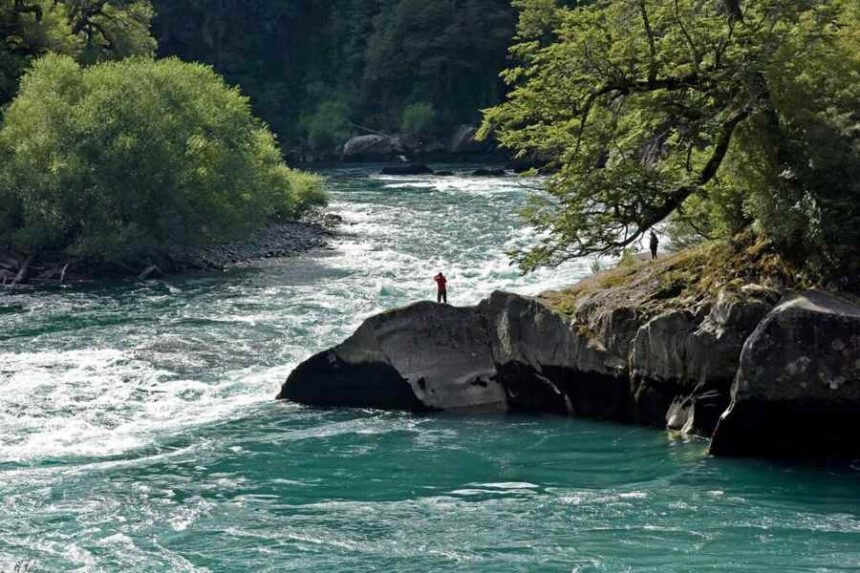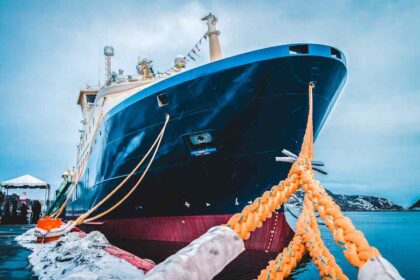Europe’s rivers are more than geographical features—they are living, flowing vessels of history, art, cuisine, commerce, and cultural transformation. For centuries, these waters have shaped civilizations, cradled empires, and inspired revolutions, both political and artistic. In 2025, the renewed global interest in slow travel, cultural immersion, and eco-conscious exploration has thrust Europe’s iconic rivers—such as the Danube, Rhine, Seine, and Douro—into the spotlight once more.
These rivers do not just transport travelers from one destination to another; they ferry them through time, offering a window into Europe’s rich and layered heritage.
We’ll explore how Europe’s most storied rivers continue to shape modern cultural experiences, anchor regional identity, and offer unique ways to rediscover the continent through deeply rooted traditions and contemporary reinvention.
The Danube: A Thread Of History From Central To Eastern Europe
Europe’s second-longest river, the Danube flows through ten countries and touches four capital cities: Vienna, Bratislava, Budapest, and Belgrade. It has been a central artery both for trade and slow river travel, migration, and empire-building since Roman times. Today, its cultural current runs just as deep.
In Vienna, classical music echoes along the waterfront, where visitors can attend open-air philharmonic concerts that celebrate the legacies of Strauss and Mozart. Cross into Bratislava, and you’ll find a distinctly different flavor—Slovakian folklore festivals and castle hilltop hikes, grounded in a proud national identity that has emerged from centuries of shared borders and shifting alliances.
Budapest straddles the Danube like a cultural colossus—one side Buda’s medieval charm, the other Pest’s fin-de-siècle grandeur. Bathhouses built on natural springs continue an Ottoman tradition, while riverfront ruin bars host electronic music performances under the stars. The river itself acts as the stage for spectacular fireworks during national holidays, uniting tradition with spectacle.
In Serbia, Belgrade’s creative revival pulses along the Danube’s banks, where historic warehouses have transformed into modern art galleries and jazz clubs. The cultural fluidity of the Danube is not just geographic but generational—bridging the Austro-Hungarian past with the post-Yugoslav present.
The Rhine: The Romantic Heart Of Western Europe
Long celebrated in German legends and romantic poetry, the Rhine River remains a defining force in Western European culture. From the vineyards of Alsace and Baden to the timber-framed towns of the Middle Rhine Valley, this waterway flows through a living canvas of medieval castles, wine traditions, and literary lore.
Cologne, Germany’s cultural powerhouse, stands proudly along the Rhine, where the Gothic cathedral pierces the skyline and world-class museums like the Ludwig Museum offer an expansive collection of modern art. Meanwhile, nearby Bonn hosts Beethovenfest every September, honoring its native son with performances along the riverbanks.
The Rhine’s legacy as a trade route continues to shape the region’s culinary scene. In Basel, Switzerland, art and gastronomy coalesce in Michelin-starred restaurants and the acclaimed Art Basel fair. In Strasbourg, France, Franco-German identity is literally baked into every tarte flambée, and river cruises pass through lock systems that were engineering marvels of their time.
Perhaps nowhere is the romance of the Rhine more tangible than in the Lorelei Valley, where steep vineyards cling to cliffs and UNESCO-protected villages host wine festivals that have been celebrated for generations. Travelers can toast Riesling vintages whose grapes grow in soil enriched by centuries of river-fed agriculture.
The Seine: The Soul Of Paris And Beyond
To understand the Seine is to understand the artistic and intellectual heartbeat of France. It is not merely a river, but a muse—immortalized in paintings by Monet and Pissarro, verses by Baudelaire, and countless cinematic love letters to the City of Light.
In Paris, the Seine divides and defines the city. The Left Bank calls to bohemians and book lovers, with its second-hand bookstores and jazz cafés. The Right Bank is the stage for grandeur: the Louvre, the Champs-Élysées, the Marais. Bateaux mouches glide under the city’s ornate bridges, while street performers bring life to the stone quays once walked by Hemingway and Sartre.
Beyond the capital, the Seine winds through Normandy, where Monet painted his water lilies at Giverny and the Gothic spires of Rouen inspired Flaubert’s realism. In Honfleur, where the river meets the sea, Impressionist art began its quiet revolution. The region’s cuisine—camembert, cider, and Calvados—draws deeply from its river-fed bounty.
The Douro: Portugal’s Golden Thread
Rising in Spain and flowing west through northern Portugal, the Douro is a river of contrast—wild and rugged in its upper reaches, calm and sunlit as it reaches Porto. But it is also a river of culture, particularly when it comes to wine, cuisine, and architecture.
The Douro Valley, a UNESCO World Heritage Site, is the oldest demarcated wine region in the world. Here, terraced vineyards cultivated by hand for generations yield the grapes that become world-famous port wine. Cultural traditions are not only preserved but celebrated: during the harvest, locals and travelers alike stomp grapes to the sound of traditional fado music.
In Porto, the riverfront Ribeira district is a patchwork of colorful houses, azulejo tiles, and family-run taverns where the cultural pulse is both nostalgic and youthful. The city has undergone a renaissance, with boutique hotels, art galleries, and tech startups revitalizing riverside buildings.
The Elbe, Rhône & Beyond: Emerging Currents Of Culture
While the Danube, Rhine, Seine, and Douro dominate popular itineraries, other rivers are quietly emerging as cultural keystones. The Elbe, flowing from the Czech Republic into Germany, carries visitors through Prague’s Gothic spires to Dresden’s restored Baroque treasures. The city’s opera scene, world-class galleries, and beer cellars make it a cultural detour worth the journey.
The Rhône, coursing from the Swiss Alps through southeastern France, connects alpine purity to Mediterranean warmth. It fuels Lyon’s claim as France’s culinary capital and threads through the lavender fields and Roman ruins of Provence. Festivals like Lyon’s Fête des Lumières bathe the riverbanks in light and sound, fusing ancient settings with modern creativity.
Wrapping Up
As Europe continues to evolve, riverfront innovation is accelerating through architectural projects like Amsterdam’s Floating Neighborhoods and Belgrade’s Waterfront revitalization, blending sustainability with urban creativity.
These developments suggest that the future of Europe’s rivers is not just in preserving their past, but in designing new stories along their banks. Whether through floating homes, cultural hubs, or renewable energy initiatives, Europe’s rivers are poised to lead the next wave of cultural transformation.




